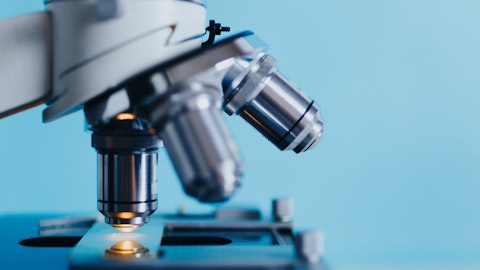Today we are going to take you for a thrilling virtual tour to the world of the 20 most deadliest and dangerous snakes in the world. Click to skip our introduction and methodology and jump to the top 10 most deadliest and dangerous snakes in the world.
Snakes have always belonged to the world’s mysterious and scary category of creatures. Humans have a strange relationship with snakes. We co-evolved with these carnivorous reptiles. They have been a part of our mythology, folklore and religions. There were several cultures which deemed snake a creature worthy of worship. These cultures regarded snakes as divine entities due to their renewal. The ancient Sumerians adored a snake god, called Ningishzida, while in Africa people worshipped a serpent, named Dahomey. Snakes, especially cobra, was the subject of ancient Egyptians’ worship as well. Serpents could embody either the evil, or the good. In India, snake worship has a longstanding tradition, as “nagas” are ranked high in Hindu mythology. In ancient Rome we can also observe the tradition of snake worship, as the name of Marsian goddess Angitia origins from the word “serpent”, and she was the goddess of snake-charmers, snakes and witches. Ancient Greece was not an exception either, as for their myth, Eurynome and Ophion (meaning serpent) ruled the world, before they were defeated by Rhea and Kronos. But over the course of centuries, there has been a decline in snake’s reputation as a deity or a mythological creature as modern man is becoming aware of the dangers of being close to snakes. We don’t like them, we fear of them and we exterminate them wherever we can.

Susan Schmitz/Shutterstock.com
Before diving into the extraordinary, fearsome and mystical world of snakes, let’s understand an important difference between the terms venomous and poisonous. What is the difference between these two terms? According to scientists, an organism is venomous if it stings or bites to inject their toxins, while poisonous organism discharges toxins when you consume them. In other words, a snake that bites you and injects its toxins is venomous. A good example for the term poisonous is mushrooms spreading their toxins while being eaten. Consequently, there are few really poisonous snakes in the world. Strictly speaking there is only one: the bite of the garter snake (Thamnophis) doesn’t include dangerous toxins, but it’s poisonous to eat, because its meat has toxins of its food: newts and salamanders.
When reading our article, you will see a special measurement unit, LD50 (lethal dose 50%). It is used to show how potent the toxins are. Actually it means that several groups of animals are injected with a certain dose of the venom, either by mouth (force-feeding), by inhalation, or by injection in saline. The injection can be subcutaneous, or intravenous. Tested animals can be fish, birds, rats, mice, rabbits, cats, dogs and apes. The test ends when half of the tested animals in the group have perished. The LD50 figure is given by the amount of test substance that slays the animals. Consequently, this is the figure that shows the toxicity rate of chemicals. However this test has several obstacles, and nowadays it’s called unscientific and cruel. The test highly depends on the tested animal’s age, diet, health condition, gender and strain. While making the research work for this article, we have found large differences among the LD50 results of different laboratories. Despite of all this cruelty and inaccuracy, unfortunately there is no other test to measure the toxicity rate of chemicals. The test is repeated on more groups of animals and on other species in order to get an average LD50 figure. As for snake venom toxicity, generally mice are used to obtain the accurate LD50. LD50 is not the most accurate figure to define how lethal the snake venom is for humans. Nevertheless it’s widely used.
Despite the fact that about 5.4 million people are bitten by snakes annually, 2.7 million of them are envenomed, and the WHO calls snakebite an epidemic worldwide, there’s an antivenom shortage in the world. The problem got into limelight when Médecins Sans Frontières (a.k.a. Doctors Without Borders) reported in 2015 that the last doses of antivenom Fav-Afrique, which is the treatment for the deadliest snakebites in Africa, were about to expire. It was because Sanofi (NYSE:SNY), the France-based mammoth pharma company, had allegedly determined in 2014 to decrease producing Fav-Afrique. This antivenom saved lives of thousands bitten by the most common and deadliest snakes in Africa, such as black mamba (Dendroaspis polylepis) in the sub-Saharan region or the carpet viper (Echis ocellatus). But the antivenom is no longer lucrative due to its high prime costs: $250-$500 per person.
Lack of infrastructure, hospitals, medical staff and declining buying power are some of the other key causes of lack of availability of anti-snake treatment. When an antivenom kit costs $100 and people in Africa try to survive by earning less than $2 a day, it’s not difficult to imagine how many patients can afford to buy it. The antivenom kits usually need to be kept in the refrigerator, but electricity supply in many parts of Africa is unreliable. This shortage actually means that only 10% of patients can get proper treatment. Unfortunately, Sanofi wasn’t the only company to reduce manufacturing antivenom. The company behind COVID-19 vaccine Pfizer (NYSE:PFE) also decided to cut its antivenom production. The humanity has to overcome not only the pandemics caused by viruses, but several other challenges. The biggest players in the antivenom market are Sanofi (NYSE:SNY), Pfizer (NYSE:PFE),Merck (NYSE:MRK), Bharat Serums and Vaccines Limited, Haffkine Bio-Pharmaceutical Corporation Ltd., BTG plc. Laboratorios Silanes, CSL Limited, Vins Bioproducts Limited, Incepta Pharmaceuticals Ltd., and Rare Disease Therapeutics Inc. According to projections, global antivenom market is projected to reach $729.9 million by 2026. If you are interested, read about the 15 largest vaccine companies in the world.
The Benefits of Snake Venom?
Snake venom is extremely useful for the production of medicines. See what Dr. Zoltan Takacs, a biomed scientist, designer of toxins, Nat Geo explorer, has to say about this:
“Animal Toxins in Medicine
Animal toxins are the source of an extraordinary array of medications: 20 drugs to treat, for example, heart attacks (INTEGRILIN®, AGGRASTAT®), high blood pressure (CAPTOPRIL®), diabetes (BYETTA®), and cancer and HIV pain (PRIALT®) with sales over a billion dollars a year. Other toxins are in trials to cure brain tumor, heart failure, and autoimmune disorders. The secret for this success is that animal toxins evolved for 400 million years to kill prey and predator. As a result, toxins are among nature’s most specific molecules aiming key targets in in vital organs from the heart to the brain — ideal templates for drugs. Yet 20 million toxins in nature remains unexplored.”
In order to compile our list of the most deadliest and dangerous snakes in the world, we consulted Australian Venom Research Unit. We also took some help in our research from Untamed Science’s venomous snakes article, written by Carl H. Earnst and George R. Zug. Furthermore, we used several studies to compare LD50 figures to those in the two above mentioned sources. We noticed that there were pretty large differences among labs and results, so we relied on the two primary sources mentioned above. The differences stem from the fact that LD50 test results can vary because of the tested animals’ age, gender, strain, diet and so on. If you live in or are planning to visit America, we recommend you to read 10 states with the most venomous snakes in America.
Let’s begin our thrilling list of 20 most deadliest and dangerous snakes in the world:





